




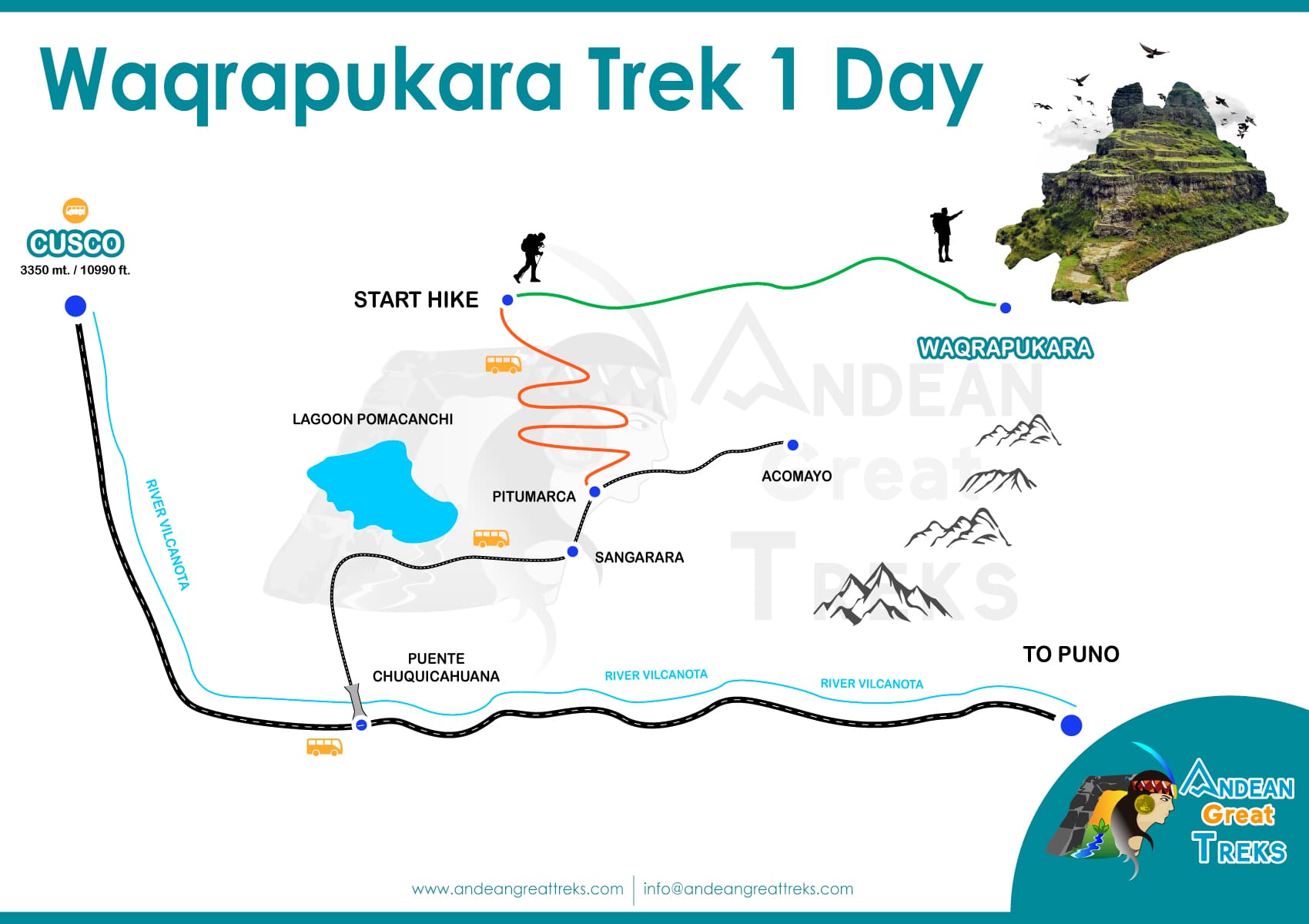 trip overview
included
Trip Highlights
activities
accommodations
itinerary
packing list
faq
best season to travel
price & availability
Reserve Online
trip overview
included
Trip Highlights
activities
accommodations
itinerary
packing list
faq
best season to travel
price & availability
Reserve Online
 CREATING AUTHENTIC TOURS IN PERU
CREATING AUTHENTIC TOURS IN PERU

Waqrapukara the archaeological site is located in the District of Acos, Province of Acomayo, Department of Cusco. It is strategically located joining the Apurimac valley and the Pomacanchi plateau, it is a cultural landscape with cognitive elements of wisdom and power, where two rocky protuberances rise, with an architecture camouflaged with carved stones.
Adapted to the monument, walled with walls of semicircular containment, with stairways, trapezoidal windows and niches, enclosures, accesses to small spaces, a central plaza facing east with trapezoidal constructions with one, double and triple jambs, including a stone for ceremonies or “Waka” and a “Machay” or cave; All these elements are found at the foot of the rocky protuberances, whose architectural characteristics make us infer that this space was ceremonial and sacred and probably had other functions for its time.
This archaeological complex called Waqrapukara. According to researcher Dr. Victor Angles Vargas, etymologically it comes from two words, waqra means horn and the word pukara means fortress or barracks. In short, this word waqrapukara means fortress in the form of a horn. It was a residence of the nobility of this place; with astronomical observatories and at the same time it was a protected religious center with watchtowers and underground paths.
We begin our trek to Waqrapukara by car, leaving Cusco in our private transport at around 4:00 am. We are heading south valley of Cusco on a paved road, in the direction of district called Acomayo. Along the way, we will pass the impressive Pomacanchis lagoon and several picturesque villages until we reach the Huascar junction where the paved road ends, and adventure begins. We continue on a hardened dirt road until we reach Huayqui (also spelled Wayki or Wayqui), the trailhead for our Waqrapukara trek.
Before we begin the hike to Waqrapukara we’ll get to share breakfast with a local family. Then it’s time to set out! The first part of our walk takes us to Suythuwanca, which will take about an hour and a half. From here, we continue walking uphill for another 1h30 along a winding path, bordered by mountains. The views here are out of this world!. In addition to these breathtaking vistas, we will be treated to fascinating ancient rock paintings along the way. Some of these cave paintings are in a great state of preservation.
Finally, we will arrive at Waqrapukara (4300m / 14,107 ft). We’ll rest and enjoy a boxed lunch before starting our guided tour of this mysterious Inca fortress. In Quechua, Waqrapukara actually means “Horn Fortress,” from the words waqra (“horn”) and pukara (“fortress”), and it is a real sight to behold. It is the horn-like rock formations that likely give the Inca fortress its name.
Waqrapukara is an imposing archaeological feature perched on a mountain top, surrounded by gorgeous, lush scenery. We’ll have about an hour to explore this fascinating site. Signs direct us to the different areas of the site, which actually includes several structures.
When we’ve had our fill of Inca history and interesting ruins, we will return along the same path. As we walk another 2hrs to our starting point, we’ll have one last opportunity to take in the stunning beauty of the surrounding mountains.
Finally, we arrive at Paltacancha where our vehicle will be waiting to take us back to Cusco, arriving at about 7pm.
For this one-day activity, try to bring the most essential trekking implements, a good feather or nylon jacket that keeps you warm, excellent hiking shoes, gloves, sunglasses, a small backpack, and extra money in soles for your personal expenses. And most importantly, bring the best adventurous spirit, always drawing the best smile for the wonders that the majestic Apurimac canyon gives us.
 warm jackets
warm jackets
 Hydration bladder
Hydration bladder
 wool socks
wool socks
 camera
camera
 scarf
scarf
 first aid kit
first aid kit
 hiking shoes
hiking shoes
 Dry bags
Dry bags
 Trekking Poles
Trekking Poles
 sun cream
sun cream
 Snack
Snack
 sun hat
sun hat
 bathing suite
bathing suite
 rain coat
rain coat
 Sandals
Sandals
 insect repellent
insect repellent
 Passport
Passport
 Down Jackets
Down Jackets
 toilet paper
toilet paper
 daypack
daypack
 Wool cap
Wool cap
 head lamp
head lamp
 gloves
gloves
 sun glasses
sun glasses
 cap
cap
 extra cash
extra cash
 Trekking pants
Trekking pants
The trek to the ruins of Waqrapukara is one of the most spectacular, since only very few people have visited it, and it still maintains the beauty of its natural landscape, with wild flowers, and pure air, where you can breathe calm and magic of the Andes. In this list of questions, our adventurers club answered the most frequently asked questions about this archaeological attraction of Cusco. If you have any other questions, please, you can do it through the online chat, or by mail.
Research indicates that Waqrapukara was initially built by the Canchis culture and not by the Incas. The Canchis inhabited the southern territories of Cusco (current province of Canchis) parallel to the Incas. Both cultures competed for territorial control.
However, after the Inca vs. Chancas (1440 AD), the Canchis allied themselves with the Incas and formed part of the Collasuyo region, in the nascent empire of Tahuantinsuyo.
The construction date of Waqrapukara is still a mystery. The canchis must have built the first roads and enclosures in a few centuries before the formation of the Inca empire in 1438. It is estimated that under the government of Emperor Túpac Yupanqui (1471 – 1493) the main temples and platforms were built.
Oral tradition brought to this day an Inca legend about Waqrapukara. This legend tells that this area lived the nobility of the Inca Qanchi. The legendary General T’ito Qosñipa, with the army of the Inca Wayna Qhapaq, won high awards as general of the conquering armies of the Tawantinsuyo Empire. In use of his vacations he came to his Qanchi tribe, stimulated by the magnificence of the Imperial Court considering distant and remote the possibility of occupying the Inca throne due to his commoner condition, it arose in his audacious mind, to overthrow the ruler of the Inca empire, with For this purpose, he ordered the construction of the Waqrapukara Fortress in secret, so that if his revolutionary adventure failed, he could take refuge and resist any attack by the imperial army.
T’ito Qosñipa proclaimed general of the Qanchis, organized an army, which then headed towards Cusco. The Ruler of the Tawantinsuyo Empire, informed by the subversive activities of T’ito Qosñipa, sent a part of his army to unveil the movement, commanded by General Anqoayllo. Both armies met on the slopes of the Phiñaypampa hill, near Corma. After a bloody and bloody battle, the hosts of T’itto Qosñipa were defeated.
As testimony to this fact, there are still human bone remains at the site of the battle. T’ito Qosñipa the Inca Qanchi, after the battle of Phiñaypampa, with the rest of his soldiers, returned to Waqrapukara. General Anqoayllo’s troops pursued the fugitives and surrounded the Waqrapukara fortress with violent attacks. When the soldiers of the aforementioned general went up to the fortress, they were thrown into the ravine as they went up, through the gates towards the abyss, today there are remains of these gates. After fifteen days of resistance to the imperial Inca army, they discovered the water channel that supplied the fortress, they cut off this water service to the Inca Qanchi’s army, for this reason he had to capitulate with General Anqoayllo.
T’ito Qosñipa was taken prisoner with a hundred of his Qanchi soldiers before the Inca ruler of the Empire. Wayna Qhapaq, knowing the reckless courage of the young warrior T’ito Qosñipa, seeing that he would be useful in his conquests, spared his life and made him marry a ñusta chosen by the Inca Qanchi in Cusco. His soldiers were also amnestied, they returned to their Qanchi tribe, with the promise of being loyal to the empire. But the ears of the hundred Qanchi soldiers were cut off. Since then they have been called mottoqanchis.
In the future, in the conquest of more Inca territories towards Ecuador by Wayna Qhapaq; This warrior T’ito Qosñipa fought with the brave Cañaris. For the triumph of the imperial Inca, two thousand Cañaris warriors of the imperial guard were brought, escorting the victorious Wayna Qhapaq. Some of these brave Cañaris warriors were also taken to the Qanchis tribe by T’ito Qosñipa; For this reason, the surname Cañari also exists today in Pomacanchi.
According to local stories, before their ears were cut off, the Qanchi soldiers of T’ito Qosñipa danced the dance of the Qanchis, by order of the imperial Inca. This dance called Qanchi Tusuy is currently practiced in Cusco, especially by the Qanchis of the 19th century. From that date they bore the nickname of Mot’oqanchis, the soldiers of the Inca Qanchi. But since colonial times, Mot’oqanchi has remained the surname, currently the offspring of such a brave warrior, we find Mottoccanchi in the ayllu of Qanchoqa, District of Pomacanchi.
There are three routes to get to Waqrapukara from the city of Cusco:
This archaeological complex is located in the district of Pomacanchi, province of Acomayo, department of Cusco. It rises over 4,300 meters above sea level, at the top of a huge ravine covered with forests that crown the abysses that lead to the canyon of the river. of Apurimac.
The original name of Waqrapukara is “Llaqtapukara”; it seems that this name was being lost over time in colonial times and the name waqrapukara was given by a group of mestizo intellectuals who plan to recover the archaeological remains and clean up this place, they gave that name because the two natural towers had shape of the horn of a cattle, In the Pre Inca and Inca times there were no cattle, so it is impossible that they have given it the name Waqrapukara. Rather lately the careful observers have found the image of the llama, in truth we can find the image of the head with its respective neck; the two natural towers are the ears of the auquénido and not of a bovine, these characters who visualized the aforementioned image are Mr. Odilón Cruz and Mr. Lucio Delgado Figueroa.
The climate is varied according to the zone, in the part of the Interandean Valley a warm temperate climate is felt that reaches 22° and in the Mountain part a cold and dry climate is felt that reaches 20° and the minimum of -4 ° in the frosty season.
Archaeologist Miguel Colque Enríquez, in 2008, began his research work in Waqrapukara and divided it into sectors as follows:
SECTOR I:
Main square, also called main terrace, is “the highest part of the complex, it extends to the foot of the natural towers, where the beautiful walls are adapted to the topography of the land, thus achieving 06 varied wide embankments of 9 m, average. In the upper part there are rectangular open spaces, which are arranged according to squares, and each space is interconnected by means of passages. It is important to note that these structures are associated with and appropriate to the existing rock outcrop.
SECTOR II:
It is located in the middle part of the rock formation immediately below Sector I. It is the sector with the greatest architectural evidence, formed by retaining walls, and its artificial platforms, adapted in a sinuous way following the capricious formations of the geomorphology.
SECTOR III:
Located to the SE of sectors I and II, lower part, it corresponds to a small rectangular platform oriented from E. to W, in which the main entrance to the archaeological complex is evidenced.
The best time to visit Peru is during the dry season, between May and November, when the weather is dry and bright, with more frequent rainfall occurring between November and April.
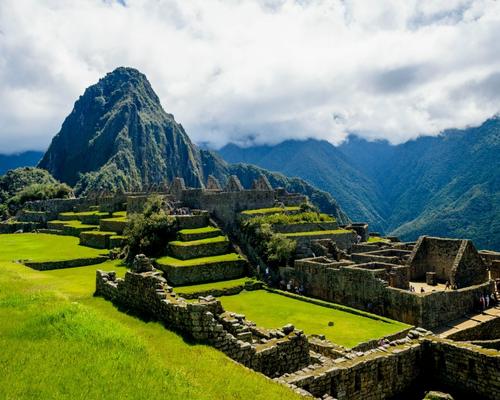 JANUARY
JANUARY
 FEBUARY
FEBUARY
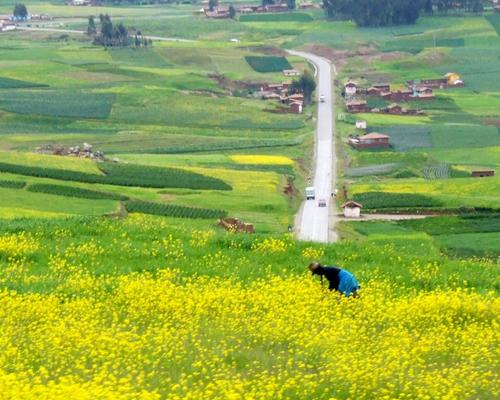 MARCH
MARCH
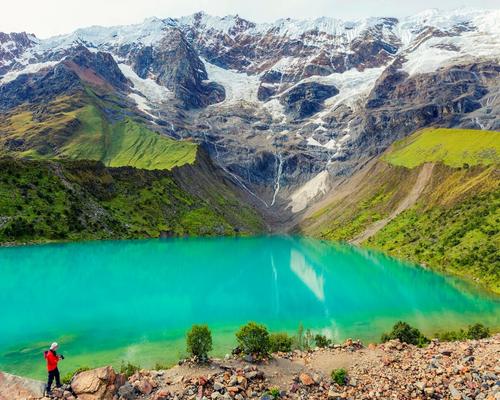 APRIL
APRIL
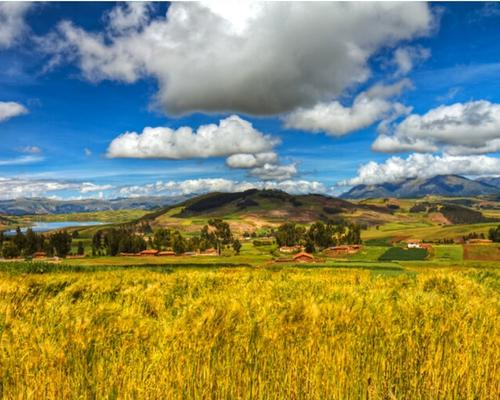 MAY
MAY
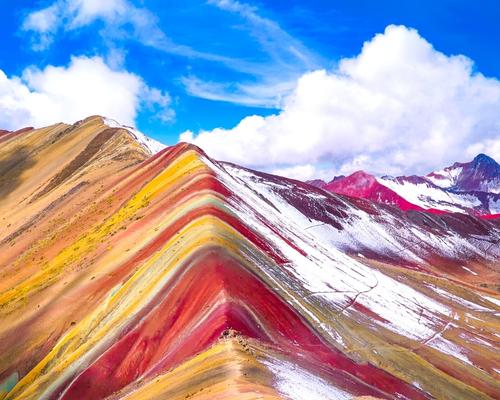 JUNE
JUNE
 JULY
JULY
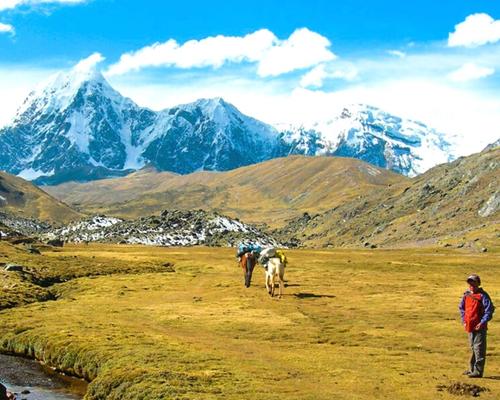 AUGUST
AUGUST
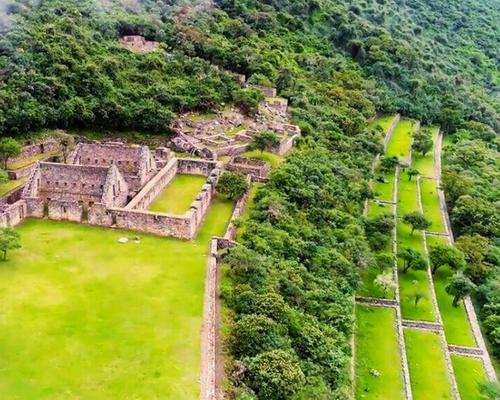 SEPTEMBER
SEPTEMBER
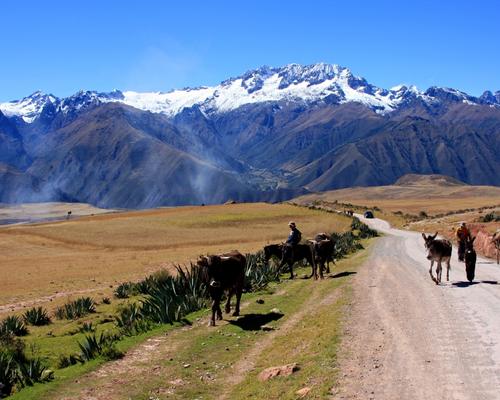 OCTOBER
OCTOBER
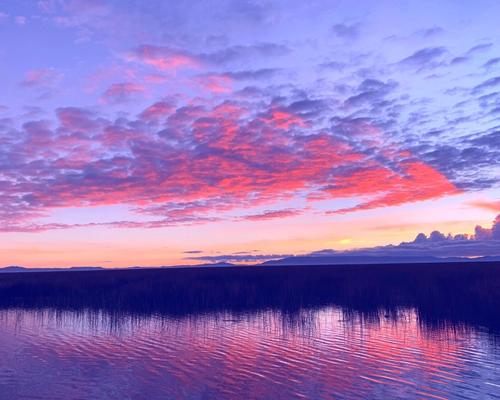 NOVEMBER
NOVEMBER
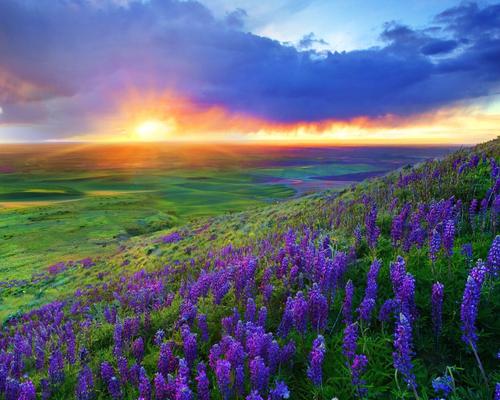 DECEMBER
DECEMBER
To book this tour, a minimum of $ 180 USD per person is required, the remaining balance will be paid upon arrival in Peru, at the Cusco office.
Any other additional information, please coordinate with your travel agent.

Nothing gets you closer to a country than walking through it, and we’ve got trips to suit walkers of all levels and interests.

All our Walking trips are graded from ‘Easy’ through to ‘Challenging to Tough’. On our online trip itineraries you’ll find a chart showing the daily walk distances, timings and information on the route including the terrain, altitude. Generally, no specific training is needed but you might feel more comfortable if you’ve got out walking a few times in the lead-up to your trip.
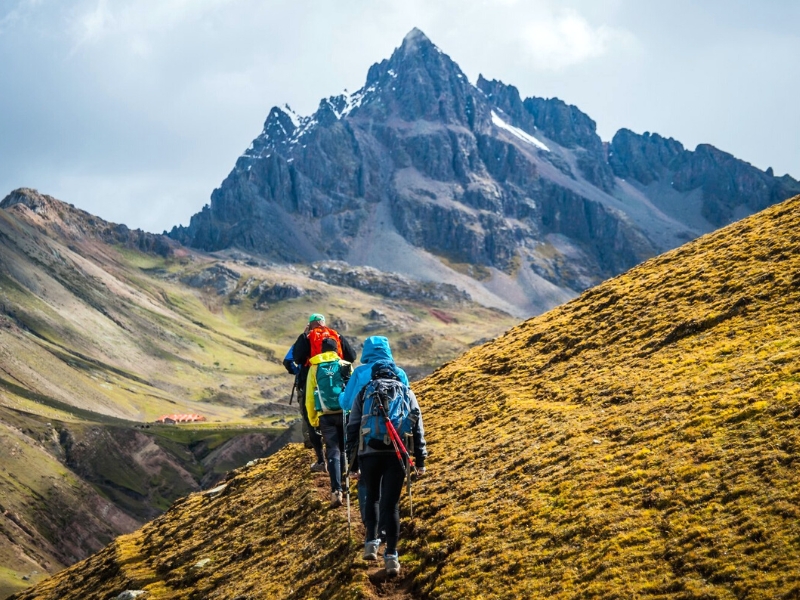
As with all our trips, every group is different but the ‘average’ group consists of roughly half couples and half solo travellers – all sharing a passion for exploring the world on foot. You’ll always have someone to keep you company along the route, but you don’t always have to walk together. Wherever possible your Andean Great Treks leader will allow everyone to walk at their own pace, regrouping regularly along the route.

Like many other countries in developing destinations, the region’s beauty and uniqueness are countered by inequality and lack of investment. This has led to crime rates (mainly theft and scams) not being uncommon in the larger cities. We know this doesn’t sound very attractive, but it’s important to mention it regardless. Most experienced and well-traveled visitors will understand this well and not be too concerned. However, having said this, it is our duty to take care of you during your visit. That’s why we present you here with a few recommendations to be extra safe. Avoid walking alone at night on empty streets. Don’t flaunt valuables! If going for a walk or going on public transport, be sensible and avoid showing off expensive items such as expensive watches and jewelry. Be careful of pickpockets! Don’t leave your bags anywhere that doesn’t look safe, and make sure to take them with you.
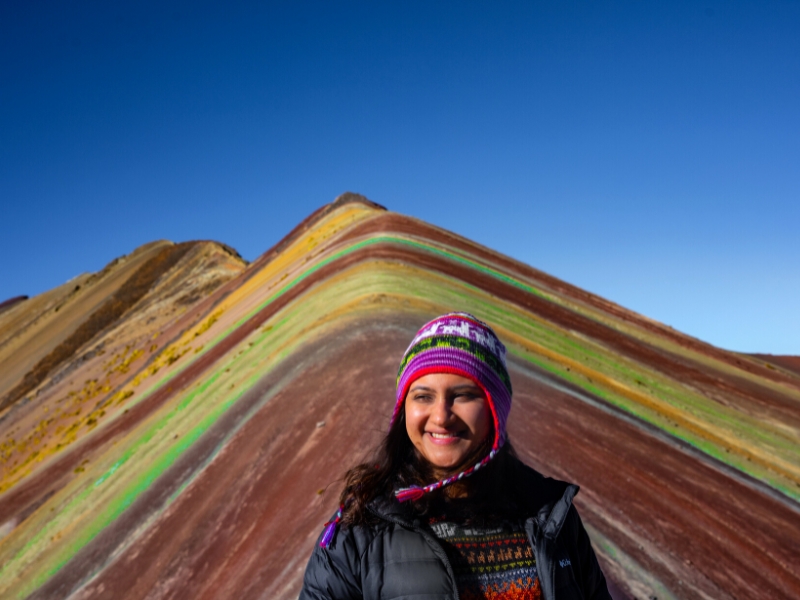
Soroche, or mountain sickness, is a reality for most people arriving in Cusco by plane from sea level and needs to be treated with respect. It’s vital to take it easy, not eating or drinking much on arrival, even sleeping a whole day just to assist acclimatization (coca tea is a good local remedy). After three days at this height most people have adjusted sufficiently to tackle moderate hikes at similar or lesser altitudes. Anyone considering hiking the major mountains around Cusco will need time to adjust again to their higher base camps.
If you do encounter altitude-related health problems, many hotels and restaurants have oxygen cylinders to help; alternatively, for serious cases, try call any of the clinics that are in Cusco, most of them have staff that speak English, for a greater facility in your attention it is recommended to have a travel insurance that covers medical expenses.
International flights to the capital city of Lima are plentiful but once there, you need to find a way to Cusco which is about 1100 km (684 miles) away. The quickest way to get to Cusco from Lima is to fly – it takes about 55 minutes. I don’t recommend traveling by bus because it takes about 24 hours – only do it if you intend to break the journey along the way, to visit other places.
Renting a car to travel from Lima to Cusco is not recommended. The roads are rough, and you could find yourself lost or face to face with one of the other dangers that come with traveling in unfamiliar territory.
The easiest way to explore the Sacred Valley from Cusco is on a guided full day tour that picks you up and drops you off from your hotel. The market in Pisac and Inca ruins in Ollantaytambo are the principal stops, though travelers with more time on their hands will find plenty more to see and do. It’s also possible to take a local bus or taxi into the Sacred Valley and do independent exploration.
Rainbow Mountain, or Vinicunca as it’s known by locals, has become a popular hike in the Cusco region. It’s possible to visit Rainbow Mountain in one (very long) day from Cusco or you can divide the trip into a two-day itinerary. While the hike isn’t very difficult and doesn’t have many steep inclines, Vinicunca is in a high elevation region (the highest part of the trail is 17,060 ft or 5,200 m) and you should spend time acclimating before starting the hike.
We are not afraid to say that Cusco is a place where every traveler ends up at least once during the trip around Peru, and it is hard to tell what is the right length of stay.
If your primary reason why to visit Cusco is to get to Machu Picchu, you still should spend here at least two days to acclimatize (despite the fact Machu Picchu is at a lower elevation than Cusco, some people still suffer from altitude sickness), and during this time you can explore the city and Sacred Valley.
From our personal experience, we think that the longer you can stay in Cusco it is better. Some travelers with limited time even revolve their entire itinerary around Cusco – this only proves how rich the city is in terms of sightseeing, architecture, and activities.
Cusco has so many things to see and do, not only within the city limits but mostly outside, that it is not a problem to spend here weeks. If you are flexible, sit down, and write down all one-day and multi-day treks you would like to do from Cusco, and you should get the optimal number of days for you.
There are so many things to see and do in Cusco and its surroundings that the city certainly deserves more than one day of your time.
To enjoy your days in Cusco the most, it is essential to choose the right accommodation. The good news is that Cusco has a great network of hotels for every type of traveler, from cheap hostels to luxurious mansions. That’s why your only job is to find a hotel in a location that suits you the best.
We recommend staying close to Centro Historico unless you want to stay away from crowds. We’ve selected the three best hotels in Cusco, so feel free to get inspired.
In recent years, Peruvian cuisine has gained popularity in the world’s culinary landscape, but for the freshest (and most authentic) specialty dishes, Cusco will not disappoint. Most Peruvian dishes carry big flavor not seen in other Latin and South American fare. You may have already tried popular dishes like ceviche (a cold dish of fresh raw fish with spicy citrus flavors) or lomo saltado (stir fried beef with fries). If you’re feeling a bit more adventurous, try Cuy (roasted guinea pig – yes, the American household pet) or charbroiled alpaca (also known as llama). Other delicious traditional dishes include adobo (a pork stew with corn beer), tamales, choclo con queso (boiled corn with local cheese) and the vegetarian stew capchi de setas. As far as vegetables go, Peru produces more than 4,000 varieties of potato, so you’ll find many dishes centered on them like papas a la huancaina (boiled potatoes with a spicy cheese sauce) and causa (a potato casserole with a variety of meat). Other staple veggies include corn and avocados. If your mouth isn’t watering yet, check your pulse.
For a taste of traditional dishes, head to PACHAPAPA or the award-winning CHICHA (visitors and locals recommend getting reservations well in advance). Peruvian cuisine often mingles with Asian influences, inspired by the culture brought by indentured servants and immigrants who came to Peru dating back to the original Spanish rule in the country. For a sampling of the Asian/Peruvian fusion cuisine, visit LIMO. If you’re really looking to splurge on a fine dining experience, try MAP Cafe. Located in the courtyard of the Pre-Columbian Art Museum in a glass shipping container, the fare is more contemporary Peruvian cuisine. You can also kick-start your day with coffee and breakfast at Jack’s Cafe, which serves breakfast all day. Many of the most popular restaurants are centrally located near Plaza de Armas.
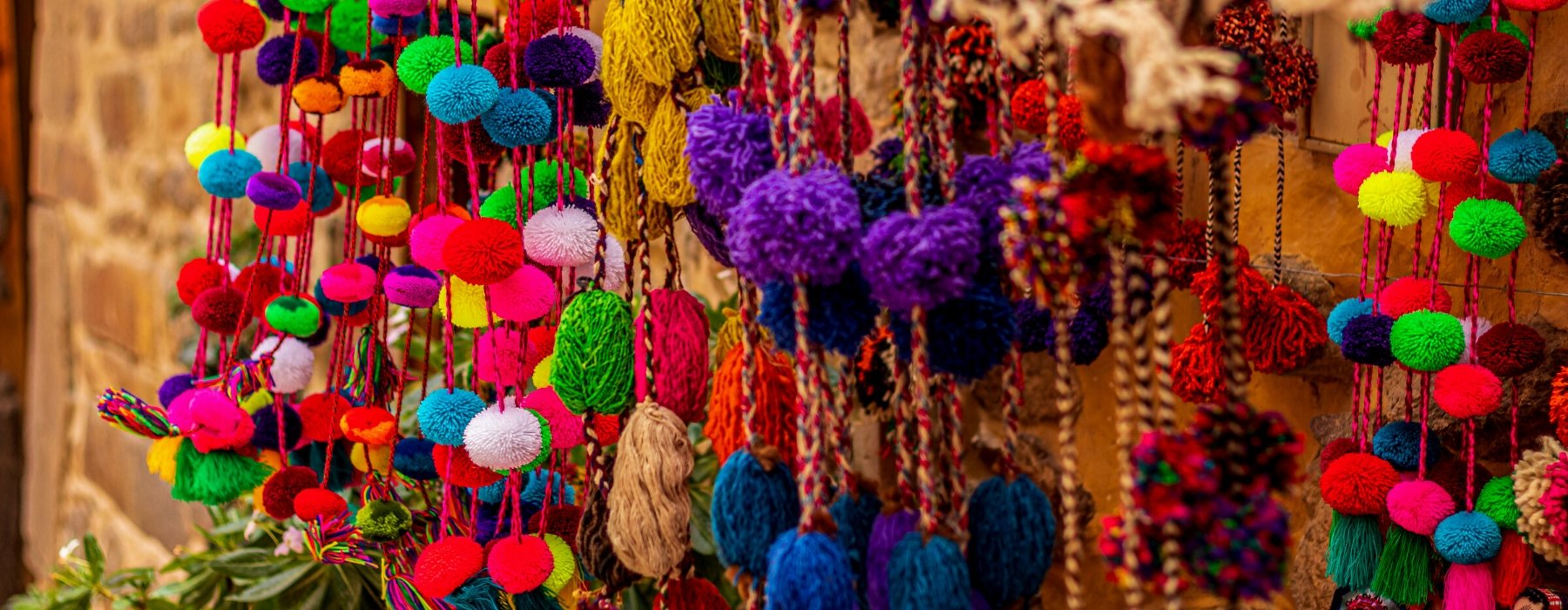
Every Andean Great Treks holiday has been thoughtfully planned and crafted by our specialists. They draw on their own extensive travel experience and the guidance and expertise of our local partners to create superb holidays. Our specialists are committed to making every aspect smooth and enjoyable; they genuinely want to ensure that the holidays they create leave you with wonderful lasting memories.
Every Andean Great Treks traveller is accompanied by an experienced tour guide, you will be immersed in Historic cities, ancient ruins and unfamiliar landscapes are all brought to life by our carefully selected local guides. They want to share their expertise and help you make your own discoveries too; their sole mission is to ensure you enjoy every moment.
Giving you the freedom to make your holiday even more memorable. We know how much our customers look forward to their holiday and we pride ourselves on the choice and flexibility that we offer to enhance every aspect of your experience. Whether it’s getting to the airport, upgrading your room or booking an additional excursion, we can help.

Our guides are the stars of the show; it is their unrivalled knowledge, passion and expertise that will transform your tour experience from good to truly extraordinary!
Because the have grown up in the area and know it like the back of their hand, so they can help you experience whichever aspects most interest you. They’re passionate about sharing their corner of the world with you, and as you explore together, they’ll open your eyes to the intricate details, provide background to enhance your understanding of what you’re seeing, and share stories that will bring everything to life.

“Your inspiration for a trip can be a single word or a highly evolved outline, but it’s the conversations we have that help us understand the experience you’re looking for. Meanwhile, I’m looking back on the time I spent at the destination.
‘The great thing about working with a specialist at Andean Great Treks is how they take your complete jumble of ideas and turn them into something absolutely spectacular.’
As you begin to share your ideas with your specialist, it will connect them immediately back to a time in their own travels. Conjuring a picture of the rest time they made that same discovery, reminding them how it felt.
Your specialist understands that, when the journey is right, it has the power to excite your emotions in the most profound ways after all, that was the effect on them.
They carry a treasure box of moments, captured over many journeys, into every suggestion they’ll share with you, as they ask you how you want to feel on your trip.

EXPERIENCES THAT CALL TO YOU
It’s what you do in a destination that helps bring it to life. It’s why we strive to choose experiences that help you connect to a place, absorbing a little of its complex character. Wherever your passions lie, we’ll recommend experiences that speak to you, and we’ll recommend the guide or local expert who’s most qualified to help you explore. Packing your holiday full of special experiences means some early starts and long days, but you can be sure that you’ll return home with many incredible memories! Read our Tours and check the Physical Ratings to see if the pace and activity levels are right for you.
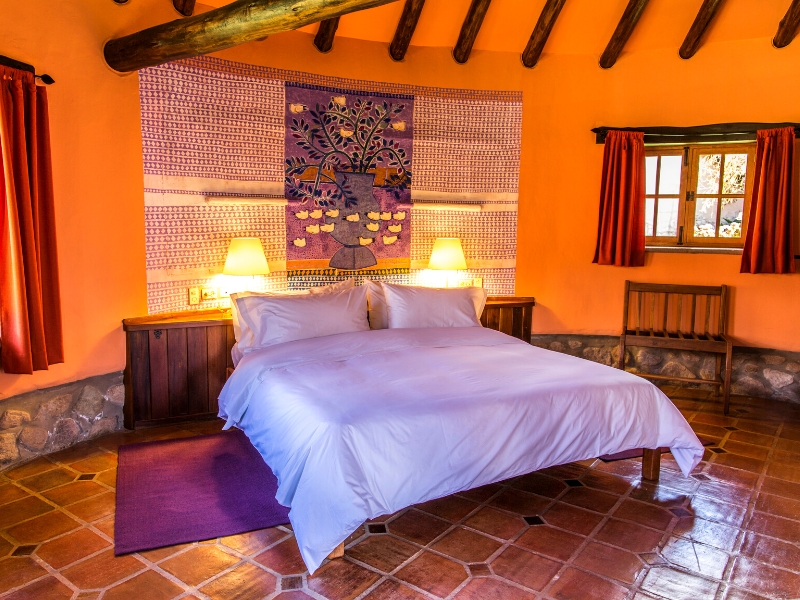
STAYS WITH DIFFERENCE
We know that where you stay is a cherished part of your travels. So, we go to great lengths to find places to stay that exceed expectations, or go above and beyond the ordinary, whether in their character, hospitality, or location. Over the years, we’ve discovered the very best properties, trying and testing them, so we can choose the right one for you. We’ve nourished long-standing relationships with these establishments and the people who founded them, and we’ve stayed there many times often, we’ll even know which rooms have the best views (and reserve them for you).
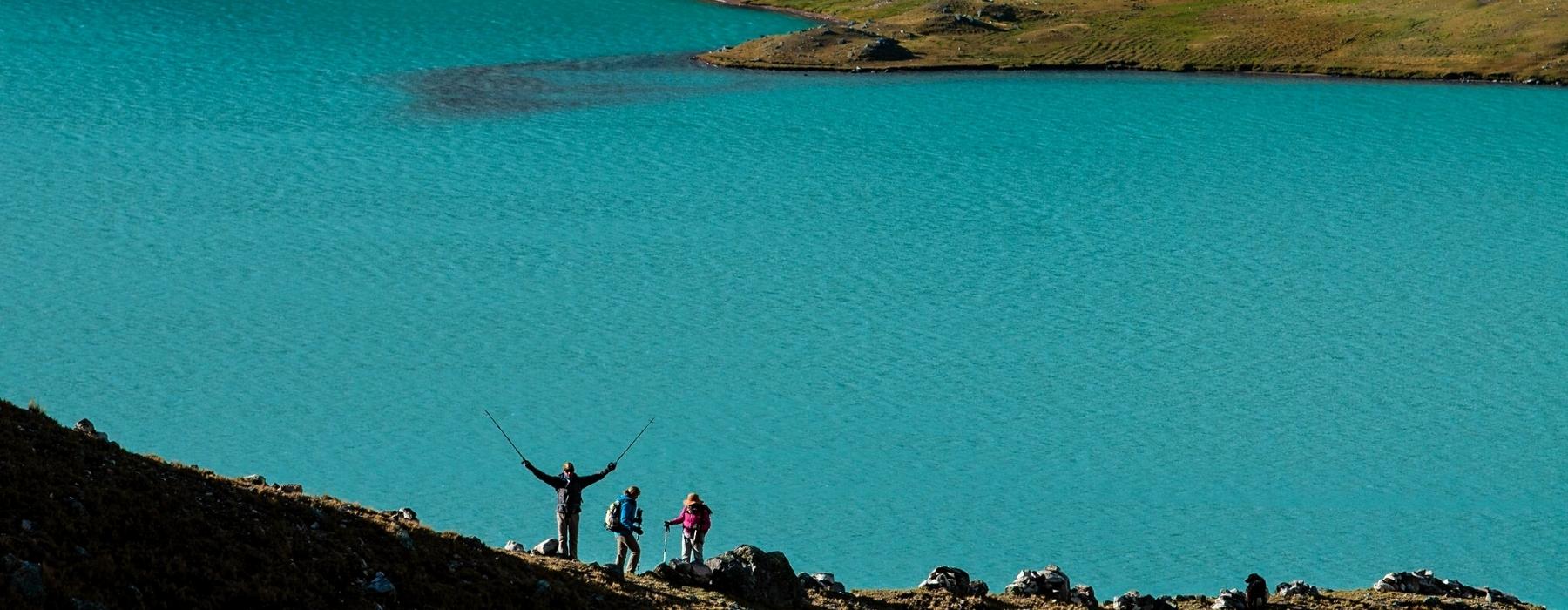
Our style of travel — authentic, thoughtful, and focused on building meaningful connections to the people and places you visit — is inherently respectful and considerate of the destinations we love. We design each aspect of your trip exactly as you want it, which includes its sustainability. That might mean choosing a train journey instead of a flight, staying at eco-friendly wildlife lodges, or opting for experiences that give back to the communities you’re visiting. The choice is yours.
Responsible travel has always been at the heart of what we do. First and foremost, because it gives you the best experience, but, also because it helps to preserve the communities and landscapes you visit. This isn’t new for us we collaborated with local communities and outside experts so we can grow to be better ambassadors.
The most authentic and interesting experiences often directly benefit the local people. We prefer to buy local products that are produced in the organic farms of the Sacred Valley, we also have alliances with local artisan organizations who provide us with souvenir items for our clients, your money directly benefits the local economy.
Our style of travel — authentic, thoughtful, and focused on building meaningful connections to the people and places you visit — is inherently respectful and considerate of the destinations we love. We design each aspect of your trip exactly as you want it, which includes its sustainability. That might mean choosing a train journey instead of a flight, staying at eco-friendly wildlife lodges, or opting for experiences that give back to the communities you’re visiting. The choice is yours.
Responsible travel has always been at the heart of what we do. First and foremost, because it gives you the best experience, but, also because it helps to preserve the communities and landscapes you visit. This isn’t new for us we collaborated with local communities and outside experts so we can grow to be better ambassadors.
The most authentic and interesting experiences often directly benefit the local people. We prefer to buy local products that are produced in the organic farms of the Sacred Valley, we also have alliances with local artisan organizations who provide us with souvenir items for our clients, your money directly benefits the local economy.
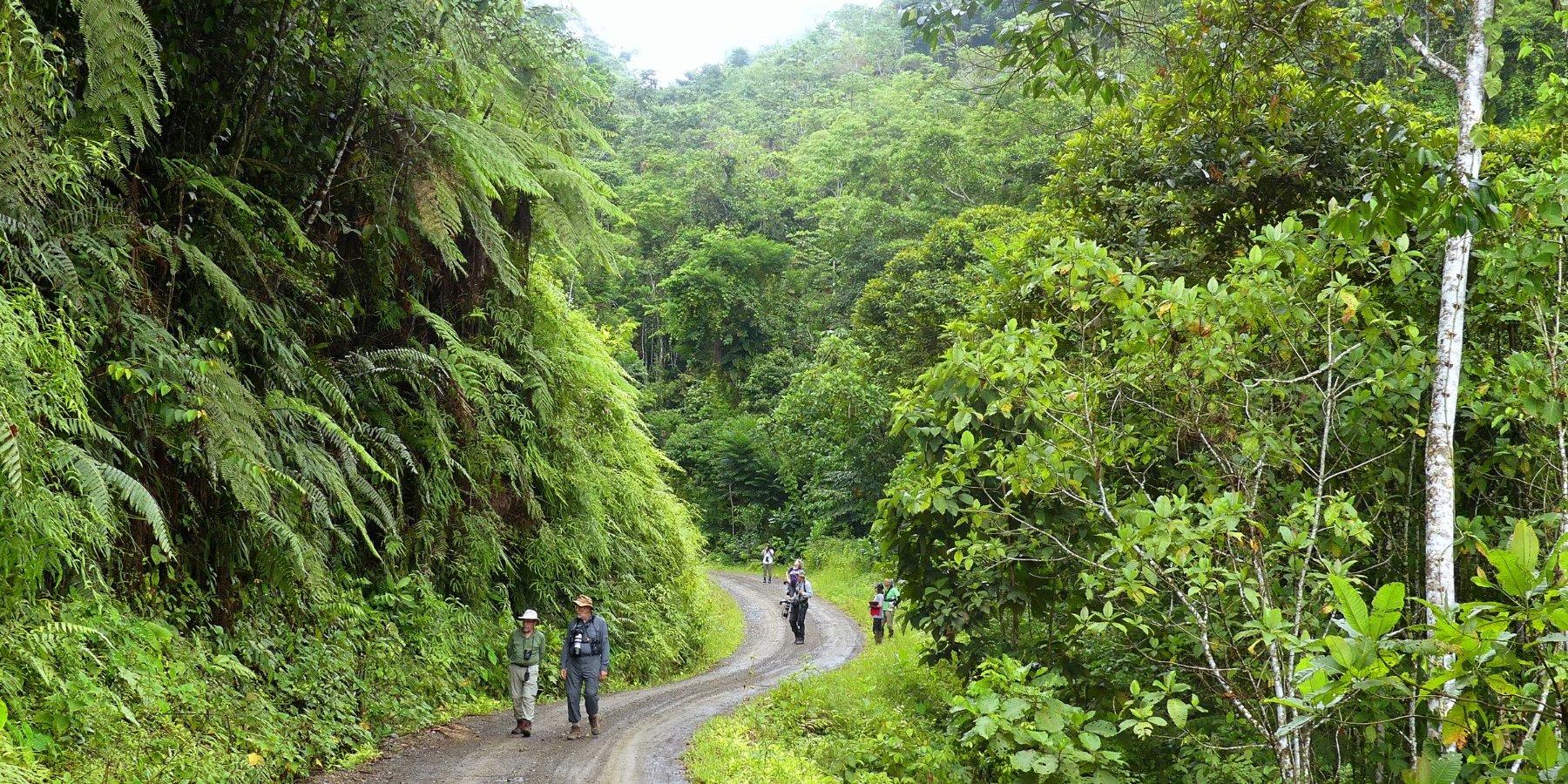
‘There’s a saying: we don’t inherit the Earth from our ancestors, we borrow it from our children. When we show you our country, this philosophy guides everything we do. It’s our responsibility to preserve the environment and wildlife, and support communities. That means using slower modes of transport, like cycling, employing local people, and working with communities who’ll benefit directly from your visit. This also gives you the best, most authentic impression of the places we want to share with you.
We prefer to buy local products in ecological bags, to avoid the use of plastic bags, likewise we teach the use of soaps and ecological products in each tour that we organize. We also work on reforestation projects with local communities who take care of landscape resources such as communal reserves, national parks.
‘There’s a saying: we don’t inherit the Earth from our ancestors, we borrow it from our children. When we show you our country, this philosophy guides everything we do. It’s our responsibility to preserve the environment and wildlife, and support communities. That means using slower modes of transport, like cycling, employing local people, and working with communities who’ll benefit directly from your visit. This also gives you the best, most authentic impression of the places we want to share with you.
We prefer to buy local products in ecological bags, to avoid the use of plastic bags, likewise we teach the use of soaps and ecological products in each tour that we organize. We also work on reforestation projects with local communities who take care of landscape resources such as communal reserves, national parks.
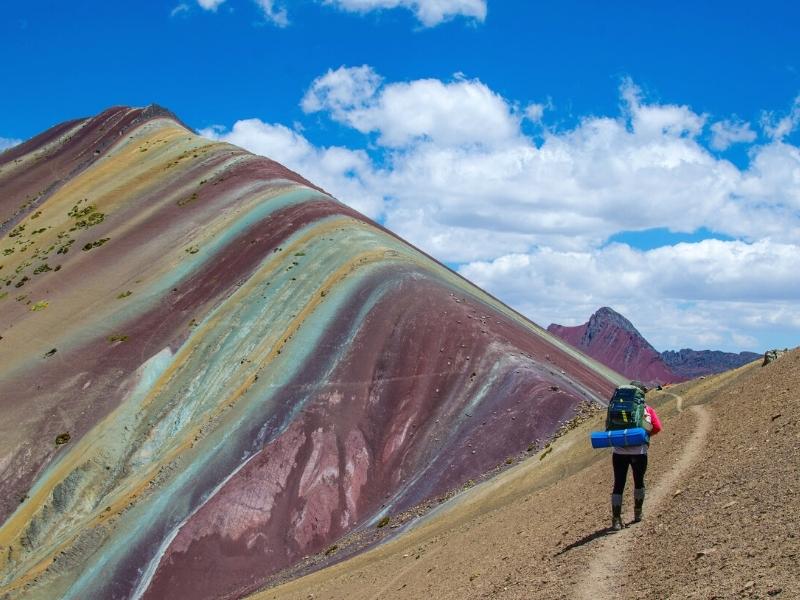
Explore the Vinicunca rainbow mountain tour, walk through the most beautiful mountains in Peru, surrounded by large snow-capped mountains, and herds of alpacas. Enjoy great views of the Red Valley, which will give you a feeling of being on the planet Mars.

The Palcoyo mountain is a dazzling mountain range of multiple colors, little visited, surrounded by beautiful Andean landscapes. The walk to Palcoyo is good from April to November.
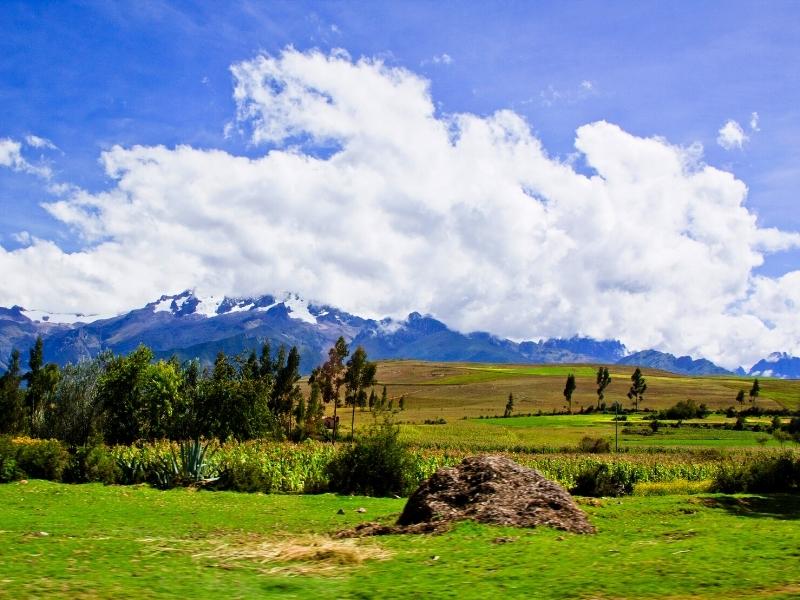
Explore the Sacred valley of the Incas, Visit the best archaeological remains of the Incas in Chinchero, Moray, Ollantaytambo and Pisac. Beautiful landscapes surrounded by snowy peaks and corn fields.
